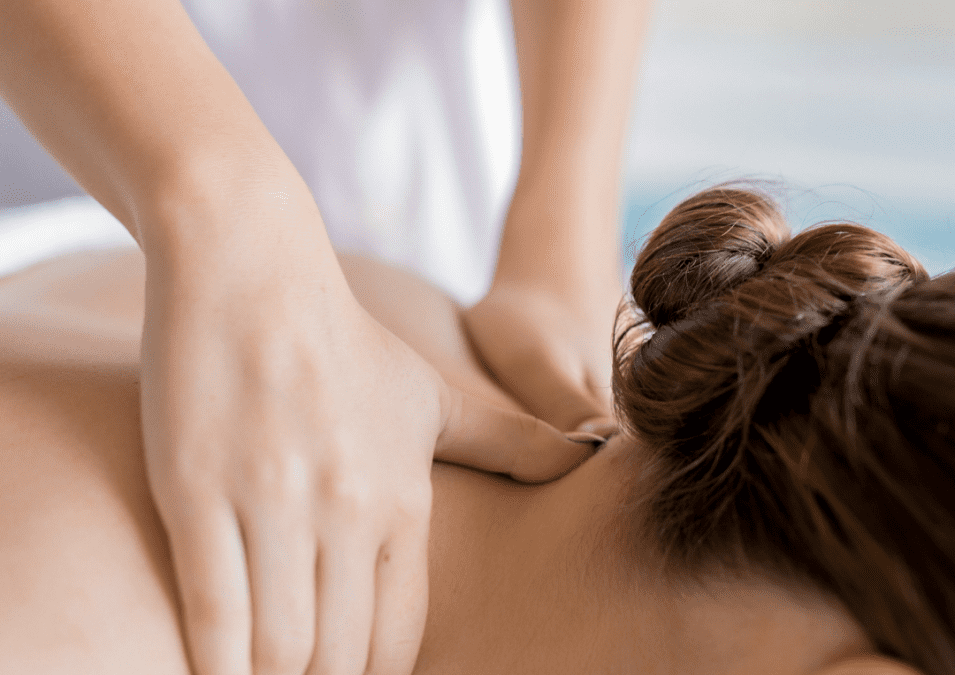Massage Therapy Is An Effective Way To Help With Respiration and Relaxation
Nearly 20 years ago, I found myself in the hospital emergency room experiencing excruciating back pain and unable to breathe without assistance. I can still remember a doctor talking about the seriousness of the situation. Hours later, my family and I learned that I was dealing with pulmonary embolisms (blood clots in the lungs). The doctors discovered I had a blood disorder and it did not mix well with a prescription medication.
Breathing is the major function of the respiratory system.
Broken down into the upper and lower respiratory systems, the upper portion includes the nose, pharynx and their associated structures. The lower region refers to the larynx, trachea, bronchi and lungs. Oxygen (O2) gets transferred from inhaled air to blood and then carbon dioxide (CO2) is transferred from the blood to exhaled air. This system also:
- helps to regulate blood pH
- contains receptors for the sense of smell
- filters inspired air
- rids the body of heat during exhalation
- produces sound as air flows out of the lungs and through the vocal cords
My case was quite unique. Of course, many other conditions can impact a person’s ability to breathe easily. The involved musculature begins to show signs of weakening as early as in the mid-20s to early 40s. Asthma, bronchitis/sinusitis or chronic obstructive pulmonary disease (commonly referred to COPD) also negatively affect breathing – as does trauma, scarring, neuromuscular or autoimmune disorders.
Massage therapy lengthens and relaxes the muscles associated with breathing. It also improves posture, which is vital to the proper functioning of the entire respiratory system.
About the author:
![]()
Libby Winterhalter, a licensed massage therapist (LMT), has been in private practice since July 2004. She graduated from SHI Integrative Medical Massage School, then located in Lebanon, Ohio. Prior to that, she received a Bachelor of Art’s degree in Communications along with a minor in Religious Studies from the College of Mount St. Joseph in 2001. Libby has also worked both in the corporate world and she served as a Journalist for the United States Navy for 22 years, from which she is now retired. She is an active member of the American Bodyworkers and Massage Professionals Association (ABMP).
Libby naturally blends both medical-based treatments and holistic therapies offering a more effective and comprehensive experience. Each session is specifically tailored to that client using one or more of the following techniques: therapeutic massage, Swedish (relaxation) massage, sports massage, Active Isolated Stretching – considered to be both a neuromuscular and myofascial release technique – Trigger Point Therapy, Craniosacral Therapy and more.
Libby has worked extensively with clients dealing with chronic pain, strains and sprains, compromised joints, spinal fusion(s), temporomandibular disorder, scar tissue, migraines, whiplash, digestive issues, plantar fasciitis and other foot-related pain, carpal tunnel syndrome, post-traumatic stress disorder, failure-to-thrive syndrome, pregnancy, cancers, amyotrophic lateral sclerosis (ALS, or Lou Gehrig’s Disease), sports-related injuries and severe injuries resulting from other accidents.
Thankfully, not all of Libby’s clients are facing life-altering issues. One client tells her she keeps him feeling younger than his years. Another client says Libby keeps her out of pain, while someone else tells her that she offers a necessary reprieve from the stressors of the world.
Libby is looking forward to expanding her practice and working with such an accomplished group of healthcare providers


